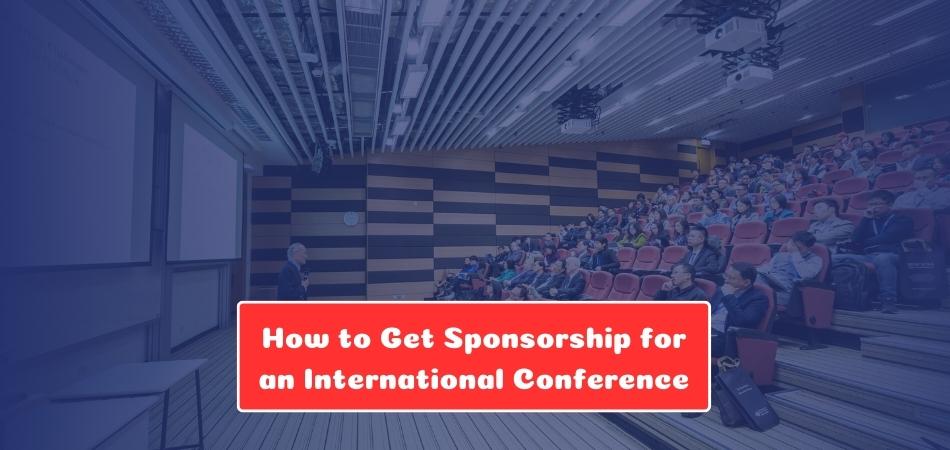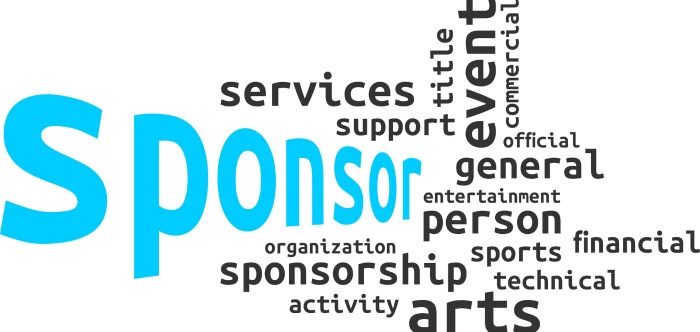Organizing an international conference is a monumental task, often requiring substantial financial support to transform ambitious visions into reality. A crucial aspect of this process is securing sponsorships, a challenge that prompts the question: How to get sponsorship for an International Conference?
Simply starts with identifying companies whose interests align with your event’s theme. From there, you need to develop a compelling sponsorship proposal and offer customizable packages that offer options to different levels of investment. It is also essential to leverage your professional network, pitch effectively, and maintain clear communication to succeed.
Interested in uncovering more about this essential aspect of event planning? Continue reading as we dive deeper into strategies for attracting sponsorships that can uplift your international conference to new heights.
What’s the Key Role of a Sponsor at a Conference?
Sponsors play a key role in providing more than financial support. Their involvement often reflects a shared vision and commitment to the conference’s themes and objectives. This partnership enhances the event’s reach, impact, and overall success, making it more valuable for both organizers and attendees.
A sponsor’s primary function is to offer financial or in-kind support, helping cover essential costs. This allows organizers to improve the event’s quality and scope, ensuring a richer experience for participants. Sponsors also bring industry expertise and professional networks, leading to diverse discussions and broader audience engagement at conferences.
Sponsors actively participate by hosting workshops, delivering keynote speeches, and joining panel discussions. Their involvement highlights their industry leadership and adds value to the event. Many large-scale gatherings attract professionals from around the world, making international conferences a key platform for collaboration. At events like an international conference in Canada, sponsor contributions can shape the overall experience, creating more opportunities for learning and networking.
Requirements for Getting a Sponsorship at An International Conference
Securing a sponsorship for an international conference is a strategic process, requiring thorough preparation and clear objectives. Understanding what potential sponsors are looking for is essential for successful negotiations. Here, we outline the key requirements for attracting sponsorship concisely and practically:
- Compelling Event Concept: Your conference must have a unique and appealing theme that aligns with potential sponsors’ interests and values. It should offer distinct opportunities for sponsors to showcase their brand and connect with their target audience.
- Detailed Sponsorship Proposal: Present a well-structured sponsorship proposal that outlines the benefits, sponsorship levels, and expected outcomes. When writing a conference sponsorship letter, clearly articulate how the sponsorship aligns with the sponsor’s marketing and corporate goals. This document should be compelling and directly address the sponsor’s interests, ensuring it resonates with their objectives.
- Audience Demographics: Provide detailed information about your event’s audience, including size, demographics, and interests. This data helps sponsors assess the potential for reaching their target market effectively through your conference.
- Marketing and Promotion Plan: Demonstrate a robust plan for marketing and promoting the event, highlighting how sponsors will be featured. Include specific channels and strategies you will use to ensure maximum visibility for sponsors.
- Past Success Metrics: If applicable, share data and testimonials from previous events to establish credibility and showcase your experience. This evidence can significantly boost sponsors’ confidence in the potential success of your conference.
- Customizable Sponsorship Options: Offer flexible sponsorship packages that can be tailored to meet different sponsors’ specific needs and budgets. This approach allows for more personalized engagement and a greater chance of securing diverse sponsorships.
Securing sponsorship for an international conference requires a thoughtful approach that aligns with potential sponsors’ goals and provides them with clear benefits. By focusing on these key requirements, organizers can increase their chances of forming successful partnerships that benefit both the event and its sponsors.
How to Get Sponsorship for An International Conference?
Gaining sponsorship for an international conference is a systematic process requiring strategic planning and effective communication. It’s about understanding potential sponsors’ needs and aligning them with your event’s goals. Here’s a step-by-step process to help you manage this path efficiently:
Step 1: Identify Potential Sponsors
Start by researching companies and organizations whose interests align with your conference’s theme. Consider various sectors like technology, education, or health, depending on your event’s focus. This targeted approach ensures you reach out to the most relevant and potentially interested sponsors.
Step 2: Develop a Strong Sponsorship Proposal
Create a comprehensive proposal that clearly outlines your conference’s value, audience demographics, and sponsorship benefits. This document should be both informative and persuasive, demonstrating why sponsoring your conference is a beneficial opportunity for them.
Step 3: Offer Customizable Sponsorship Packages
Provide various sponsorship packages to accommodate different levels of investment and interest. Tailor these packages to include options like branding, speaking opportunities, and exhibition space, making them adaptable to sponsors’ specific marketing strategies.
Step 4: Leverage Your Network
Utilize your professional network to make initial contacts and introductions. Personal connections can often lead to more receptive and open discussions about potential sponsorship opportunities.
Step 5: Pitch to Potential Sponsors
Arrange meetings or calls to present your proposal to potential sponsors. Be prepared to answer questions and discuss how your conference aligns with their goals, emphasizing mutual benefits.
Step 6: Follow Up and Negotiate
After your initial pitch, follow up promptly. Be open to negotiation and flexible in adjusting the sponsorship package to meet the sponsor’s needs while maintaining the value for your conference.
Step 7: Formalize the Agreement
Once a sponsor agrees, formalize the sponsorship with a clear and detailed contract. This document should outline all terms and conditions, ensuring both parties have a mutual understanding of the commitments.
Step 8: Maintain Ongoing Communication
Keep your sponsors informed throughout the planning process and after the event. Regular updates and post-event reports reinforce the value of their investment and lay the groundwork for future collaboration.
Building strong partnerships can not only support your current event, but also pave the way for future opportunities. Remember, successful sponsorship is about creating value for both your event and your sponsors. As you look to find sponsors for an international conference, keep these steps in mind to ensure a fruitful collaboration.
Different Types of Sponsors at a Conference
Conferences rely heavily on sponsorships to sustain their operations. These sponsors can provide financial backing, products, or services. Understanding the types of sponsors helps in building fruitful partnerships. Listed below are some key types of conference sponsors:
Title Sponsors
Title sponsors are often the event’s main financial backers, providing significant funds or resources. Their name becomes synonymous with the conference, offering them maximum exposure and branding opportunities. In return, they often shape key aspects of the event, reflecting their prominent role. Their contribution is crucial in elevating the conference’s stature and operational scale.
Media Sponsors
Media sponsors specialize in promoting the conference through various channels like newspapers, online platforms, and broadcasting services. Their role is vital in amplifying the event’s visibility and reaching a wider audience. They exchange advertising for sponsorship, providing crucial marketing support. This partnership is key for driving attendee numbers and enhancing the conference’s profile.
In-Kind Sponsors
In-kind sponsors provide services or products instead of monetary support, filling essential needs of the conference. Their contributions can range from technological support to catering services, crucial for smooth event execution. These sponsors add value by reducing the conference’s operational costs. Their involvement is often highlighted through acknowledgments and branding at the event.
Exhibitor Sponsors
Exhibitor sponsors contribute financially and by participating actively in the conference’s exhibition area. Their booths provide interactive experiences for attendees, showcasing their products or services. This type of sponsorship fosters a marketplace atmosphere and enhances the conference experience. Their presence is vital for networking and introducing new industry trends to attendees.
The tapestry of a successful conference is woven with diverse sponsorships, each playing a unique role. Title, media, in-kind, and exhibitor sponsors collectively contribute to the multifaceted nature of these events. As an organizer, recognizing and valuing these varied contributions is key to orchestrating a successful and memorable conference.
How Does Sponsorship Benefit You at an International Conference?
Sponsorship at an international conference can greatly contribute to your conference’s success and impact. It provides the necessary support to maximize the conference experience for attendees. Here explore the key benefits sponsorship offers.
Increased Financial Support
Sponsorship brings in essential funds that help cover event costs. These contributions allow for better facilities, speakers, and materials. As a result, the overall quality of the conference improves significantly. Providing more resources make your conference more attractive to participants.
Improved Brand Visibility
Sponsors help boost your conference’s visibility through their marketing channels. Their promotion reaches a broader audience who might not have known about the event. This increased exposure can lead to higher attendance numbers. More participants contribute to a more dynamic and engaging conference atmosphere.
Networking Opportunities
Sponsorships create valuable networking opportunities with key industry players. Sponsors often bring their own networks, expanding connections for all involved. These interactions can lead to future collaborations and partnerships. Building relationships is a crucial aspect of any successful conference.
Credibility and Trust
Having reputable sponsors associated with your event enhances its credibility. Participants are more likely to trust and attend a conference backed by well-known brands. This association lends authority to your event’s content and objectives. It also reassures attendees of the conference’s quality and professionalism.
Long-term Partnerships
Securing sponsorships can lead to ongoing relationships that benefit future events. Sponsors may return for subsequent conferences if the partnership is fruitful. These lasting collaborations provide stability and continuous support. A strong track record with sponsors boosts your event’s reputation.
Sponsorship at an international conference offers a wide range of advantages, from financial backing to enhanced credibility. By asking for international conference sponsorship thoughtfully, you can unlock these benefits, ensuring your event’s success and paving the way for future growth.
Final Brief
Knowing how to get sponsorship for an international conference is key to unlocking a world of opportunities. Through strategic planning, targeted proposals, and building strong relationships with sponsors, conference organizers can secure the vital support needed for success.
These partnerships not only provide essential funding but also bring a wealth of benefits, including enhanced brand visibility, networking opportunities, market insights, and a boost in corporate responsibility and image. The process of securing sponsorships is intricate and requires a nuanced approach, but the rewards are significant.
By adeptly navigating these waters, organizers can elevate their international conferences, ensuring both a memorable experience for attendees and a fruitful collaboration for sponsors.








